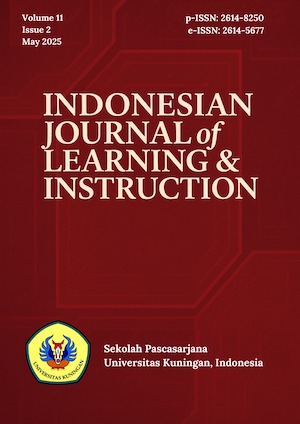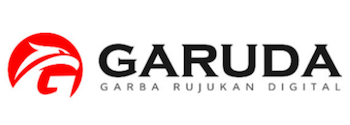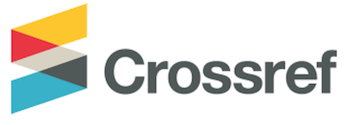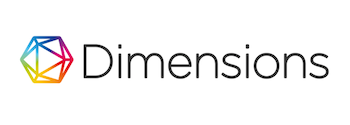TYPES OF ASSESSMENT AFFECTING IRANIAN EFL LEARNERS' GENERAL AND ACADEMIC SELF-EFFICACY
Abstract
The purpose of this study is to compare the effects of three types of assessment (self, peer, and teacher) on EFL learners’ general and academic self-efficacy. The participants included a sample of 94 Iranian EFL learners studying English at IT English institute in Qazvin, Iran. A version of the Preliminary English Test (PET) along with the Persian translation of a 12-item general self-efficacy and an 8-item academic self-efficacy questionnaire were used to collect data. The participants were divided into three groups, and each group of participants was exposed to one of the treatment conditions. They were given the questionnaires both before and after the treatment. Two separate ANCOVA procedures were used to analyze data. No significant differences were found among the effects of the three types of assessment on general self-efficacy. However, both self-assessment and peer-assessment were found to be more effective on academic self-efficacy than teacher-assessment. Meanwhile, the difference between self and peer -assessment in academic self-efficacy was not statistically significant. Other than theoretical implications, the findings of this study may also have pedagogical implications for teachers, learners as well as syllabus designers.
References
Abbasian, G. R., Khezrinejad, M., & Teimourtash, M. (2017). Involving self-, peer-, and teacher-assessment in a writing course: A cross comparison and reflection of students’
perceptions. The Journal of Applied Linguistics and Applied Literature: Dynamics
and Advances, 5(1), 3-26.
Adachi, C., Hong-Weng Tai, J., & Dawson, P. (2017). Academics’ perceptions of the benefits and challenges of self and peer assessment in higher education. Assessment and Evaluation in Higher Education, 43(2), 294-306.
Alfallay, I. (2004). The role of some selected psychological and personality traits of the rater in the accuracy of self- and peer-assessment. System, 32, 407-425.
Bandura, A. Barbaranelli, C., Caprara, G, V., & Pastorelli, C. (2001). Self-efficacy beliefs as shapers of children's aspirations and career trajectories. Child Development, 72, 187- 206.
Bong, M. (2001). Role of self-efficacy and task-value in predicting college students' course performance and future enrolment intentions. Contemporary Educational Psychology, 26, 553-570.
Bosscher, R. J., & Smit, J. H. (1998). Confirmatory factor analysis of the General Self-Efficacy Scale. Behavior Research and Therapy, 36(3), 339-343.
Britner, S. L., & Pajares, F. (2006). Sources of science self-efficacy beliefs of middle school students. Journal of Research in Science Teaching, 43, 485- 499.
Brown, J., & Hudson, T. (1998). The alternatives in language assessment. TESOL Quarterly, 32, 653-675.
Butler, Y. G., & Lee, J. (2010). The effects of self-assessment among young learners of English. Language Testing, 27(1), 5-31.
Chacon, C. T. (2005). Teachers' perceived efficacy among English as a foreign language teacher in middle schools in Venezuela. Teaching and Teacher Education, 21, 257-272.
Chemers, M. M., Hu, L., & Garcia, B. F. (2001). Academic self-efficacy and first-year colledge student performance and adjustment. Journal of Educational Psychology, 93(1), 55-64.
Chen, C. H. (2010). The implementation and evaluation of a mobile self- and peer- assessment system. Computers & Education, 55, 229-236.
Chen, Y. (2008).Learning to self-assess oral performance in English: A longitudinal case study. Language teaching research, 12(2), 235-262.
Cheng, W., & Warren, M. (2005). Peer assessment of language proficiency. Language Testing, 22(1), 93-121.
Davies, P. (2002). Using student reflective self-assessment for awarding degree classifications. Innovations in Education and Teaching International, 39, 307- 319.
Doménech-Betoret, F, Abellán-Roselló, L. & Gómez-Artiga, A. (2017). Self-Efficacy, satisfaction, and academic achievement: The mediator role of students’ expectancy-value beliefs. Frontiers in Psychology, 8, 1-12.
Elahi Motlagh, S., Amrai, K. & Yazdani, M. (2011). The relationship between self-efficacy and academic achievement in high school students. Procedia Social and Behavioral Sciences, 15, 765–768.
Esfandiari, R., & Myford, C. M. (2013). Severity differences among self-assessors, peer-assessors, and teacher-assessors rating EFL essays. Assessing writing, 18(2), 111-131.
Hoy, A. W., & Davis, H. A. (2006). Teacher self-efficacy and its influence on the achievement of adolescents. In F. Pajares & T. Urdan (Eds.), Self-efficacy of adolescent (pp. 117-137). Greenwich Connecticut: Information Age Publication.
Huang, SH., CH. (2011). Convergent vs. divergent assessment: Impact on college EFL students' motivation and self-regulated learning strategies. Language Testing, 28(2), 251-271.
Kao, G. Y. M. (2012). Enhancing the quality of peer review by reducing student free riding: peer assessment with positive interdependence. British Journal of Educational Technology, 44(1),112-124.
Karaca, E. (2009). An evaluation of teacher trainee's opinions of the peer assessment in terms of some variables. World Applied Sciences Journal, 6(1), 123-128.
Keig, L. (2000). Formative peer review of teaching: attitudes of faculty at liberal arts colleges toward colleague assessment. Journal of Personnel Evaluation in Education, 14(1), 67-87.
Köseoğlu, Y. (2015). Self-efficacy and academic achievement – A case from Turkey. Journal of Education and Practice, 6(29), 131-141.
Lampert, J. N. (2007). The relationship of self-efficacy and self-concept to academic performance in a college sample: Testing competing models and measures. Master's thesis, Pacific University. Retrieved from http://commons.Pacificu. Edu/spp/86
Maraghi, M., Mortazavi-Tabatabaei, S. A., Ahmady, S., & Hosseini, M. (2018). The relation of educational self-efficacy and motivation among medical education students. Journal of Advances in Medical Education (JAMED), 1(2), 1-5.
McLaughlin, P., & Simpson, N. (2004). Peer assessment in first grade university: How the students feel. Studies in Educational Evaluation, 30, 135-149.
Nicol, D. J., & Macfarlane-Dick, D. (2006). Formative assessment and self-regulated learning: a model and seven principles of good feedback practice. Studies in Higher Education, 31(2), 199-218.
Pajares, F. (2003). Self-efficacy beliefs, motivation, and achievement in writing: a review of the literature. Reading and Writing Quarterly, 19, 139-158.
Pajares, F. (2006). Self-efficacy during childhood and adolescence. In F. Pajares & T. Urdan (Eds.), Self-efficacy beliefs of adolescents (pp. 339-367). Greenwich, CT: Information Age Publishing.
Pajares, F., & Shunk, D. H. (2001). Self-beliefs and school success: self-efficacy, self-concept, and school achievement. In R. Riding and S. Rayner (Eds.), Perception (pp. 239-266). London: Ablex Publishing.
Pare, D. E., & Joordens, S. (2008). Peering into large lectures: examining peer and expert mark agreement using peerScholar, an online peer assessment tool. Journal of Computer Assisted Learning, 24(6), 526-540.
Ratminingsih, N. M., Marhaeni, A., & Vigayanti, L.P.D. (2018). Self-assessment: The effect on students’ independence and writing competence. International Journal of Instruction. 11, 277-290.
Ross, S. J. (2005). The impact of assessment method on foreign language proficiency growth. Applied linguistics, 26(3), 317-342.
Schunk, D. H., & Pajares, F. (2002).The development of academic self-efficacy. In A. Wigfield & J. Eccles (Eds.), Development of achievement motivation (pp. 16-32). San Diego: Academic Press.
Schwarzer, R., & Jerusalem, M. (1995). Generalized self-efficacy scale. Measures in health psychology: A user's portfolio. Causal and Control Beliefs, 1, 35-37.
Shepard, L. A. (2000). The role of assessment in a learning culture. Educational Researcher, 29, 4-14.
Sluijsmans, D., & Prins, F. (2006). A framework for integrating peer assessment in teacher education. Studies in Educational Evaluation, 32, 6-22.
Sluijsmans, D., Dochy, F., & Moerkerke, G. (1999). Creating a learning environment by using self-, peer-, and co-assessment. Learning Environments Research, 1(3), 293-319.
Tillema, H., Leenknecht, M., & Segers, M. (2011). Assessing assessment quality: criteria for quality assurance in design of (peer) assessment for learning- a review of research studies. Studies in Educational Evaluation, 37(1), 25-34.
Topping, K. J. (2017). Peer assessment: Learning by judging and discussing
the work of other learners. Interdisciplinary Education and Psychology, 1(1), 1-17.
Wanner, T. & Palmer, E. (2018). Formative self-and peer assessment for improved student learning: the crucial factors of design, teacher participation and feedback. Assessment & Evaluation in Higher education, 43(7), 1032-1047.
White, E. (2009). Student perspectives of peer assessment for learning in a public speaking course. Asian EFL Journal, 33 (1), 1-36.
Xiao, Y., & Lucking, R. (2008). The impact of two types of peer assessment on students' performance and satisfaction within a Wiki environment. Internet and Higher Education, 11(3), 186-193.
Zarei, A. A., & Sayar Mahdavi, A. (2014). The effect of peer and teacher assessment on EFL learners' grammatical and lexical writing accuracy. Journal of Social Issues and Humanities, 2(9), 92-97.
Zarei, A. A., & Taheri, S (2013). Multiple intelligences as predictors of self-efficacy. Germany: Lambert academic Publishing.
Zimmerman, B. J. (2000). Self-efficacy: An essential motive to learn. Contemporary Educational Psychology, 25, 82-91.
Zimmerman, B. J. (2008). Investigating self-regulation and motivation: Historical background, methodological developments, and future prospects. American Educational Research Journal, 45(1), 166-183.









